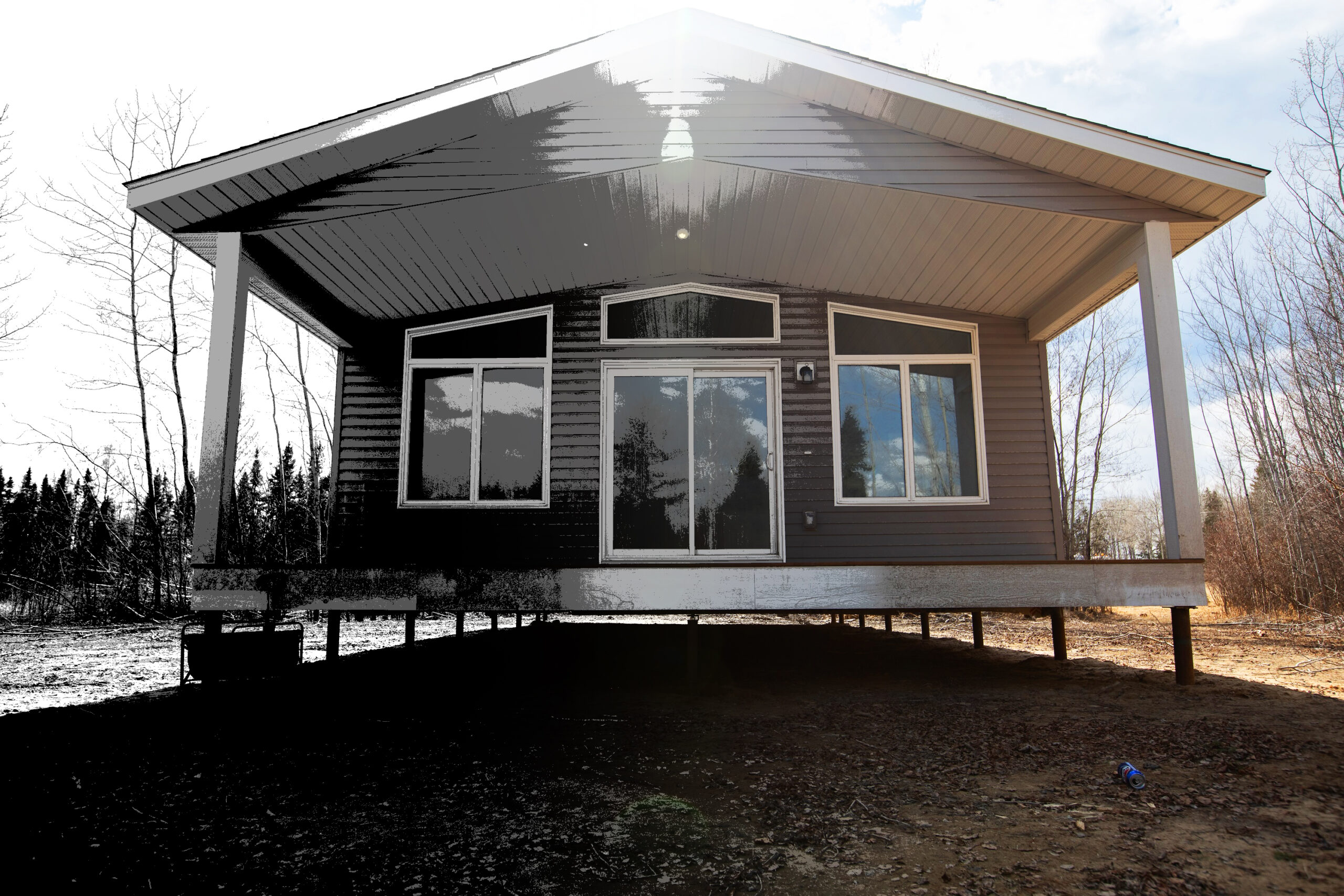Across Canada, few issues resonate as powerfully, or as personally, as housing. For many, it represents not just a place to live, but a foundation for stability, community, and opportunity. Within Indigenous communities, the housing crisis is layered atop long-standing structural barriers.
The latest findings from Indigenous Insights – Earnscliffe’s quarterly study tracking the perspectives of Indigenous peoples across Canada – reveal a complex picture: persistent challenges, growing optimism, and a clear aspiration for greater homeownership.
Housing tops the list of concerns
study – and this wave is no exception. Eighteen per cent of Indigenous respondents identify housing as the country’s top challenge overall, and 14 per cent cite it as the most urgent issue facing Indigenous peoples specifically. It continues to outpace other longstanding priorities such as Indigenous rights and Reconciliation (14%) and clean drinking water (10%), underscoring how deeply housing concerns shape both national and community-level outlooks.
While many of the same economic pressures seen across the country are felt acutely in Indigenous communities – high prices, limited supply, and affordability constraints – these are compounded by gaps in infrastructure, historic underinvestment, and the unique complexities of on-reserve housing systems. For many, community housing has been the only available option, particularly in remote or northern regions.
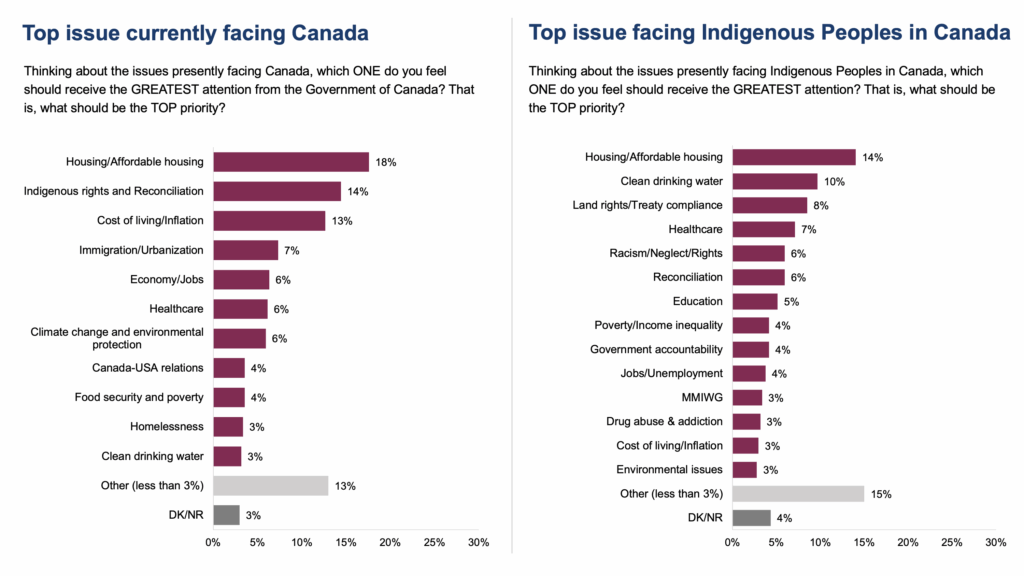
Cautious optimism in living standards
Despite these persistent challenges, this wave of Indigenous Insights reveals a subtle shift in Indigenous outlooks that may materialize into something more significant over time. More respondents now describe their personal standard of living as “good” (42%), and optimism is growing: 39 per cent say things are getting better for themselves, while 32 per cent say the same for Indigenous peoples in Canada as a whole. Although these numbers may seem modest, they mark the most positive outlook recorded in several waves of the survey and suggest that confidence in personal and collective progress is beginning to recover after a period of decline.
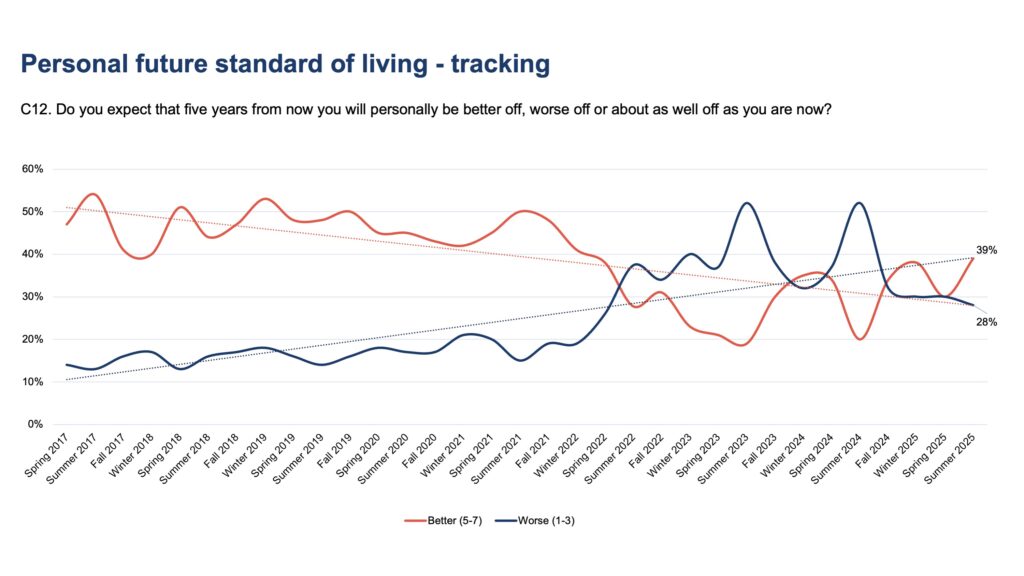
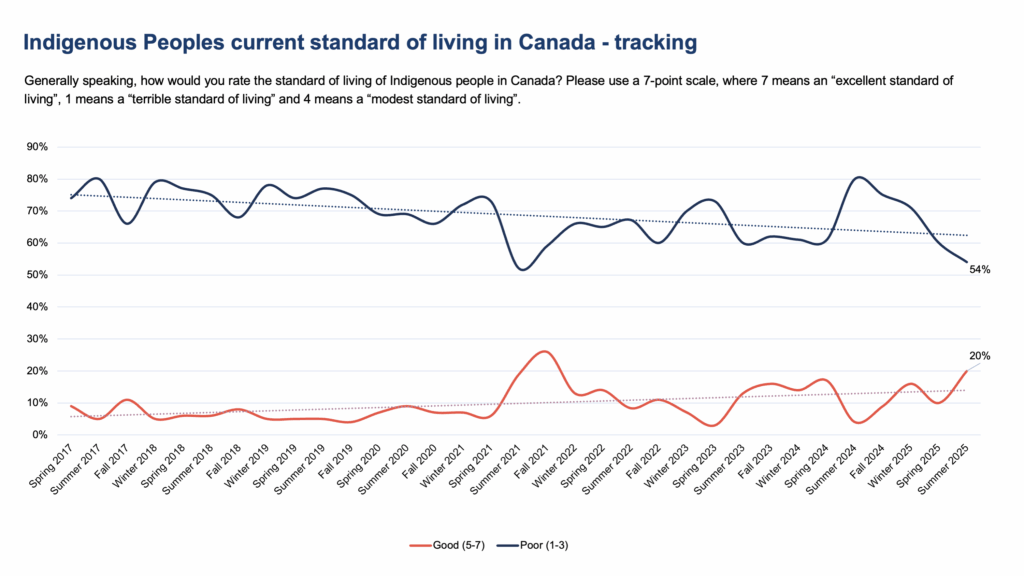
Yet optimism remains tempered by reality. Only one in five respondents (20%) believe the overall standard of living for Indigenous peoples in Canada is “good,” while more than half (54%) describe it as “poor.” The data suggest a widening recognition that while personal circumstances may be improving, broader systemic inequalities remain deeply entrenched.
Homeownership aspirations
For many Indigenous peoples, homeownership involves navigating a distinct set of challenges including financial barriers, limited access to credit, and, in some cases, complex jurisdictional frameworks. Still, aspirations for home ownership remain strong. About one-third of current renters (33%) and those in alternative housing (31%) say they hope to own a home within five years.
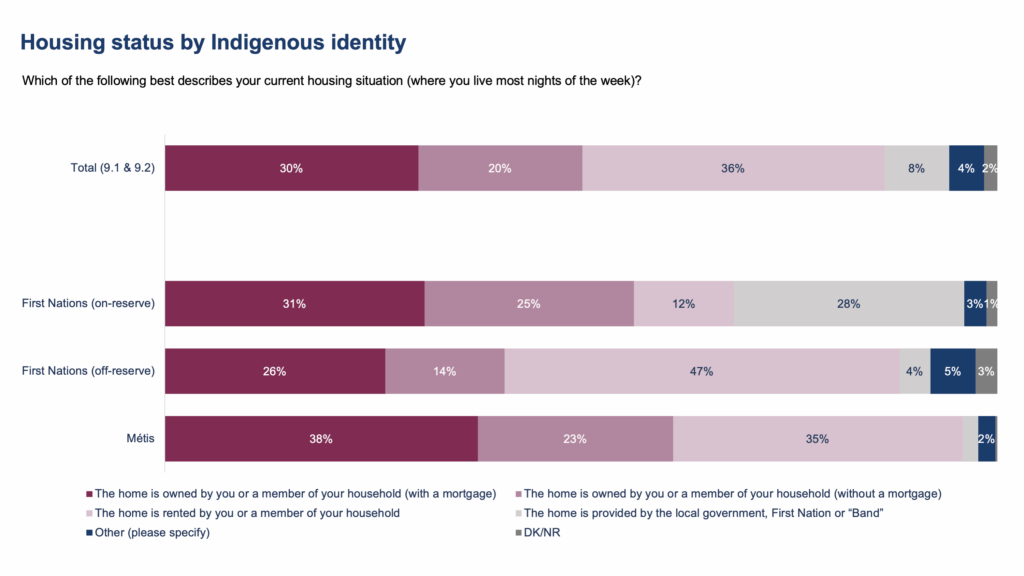
However, only a small minority view this goal as realistic: just 13 per cent say homeownership is “very possible,” while nearly a quarter (23%) see it as “impossible.” Financial constraints dominate the list of barriers: 65 per cent cite high home prices, 44 per cent point to monthly housing costs, and 30 per cent say they feel overwhelmed by the process itself.
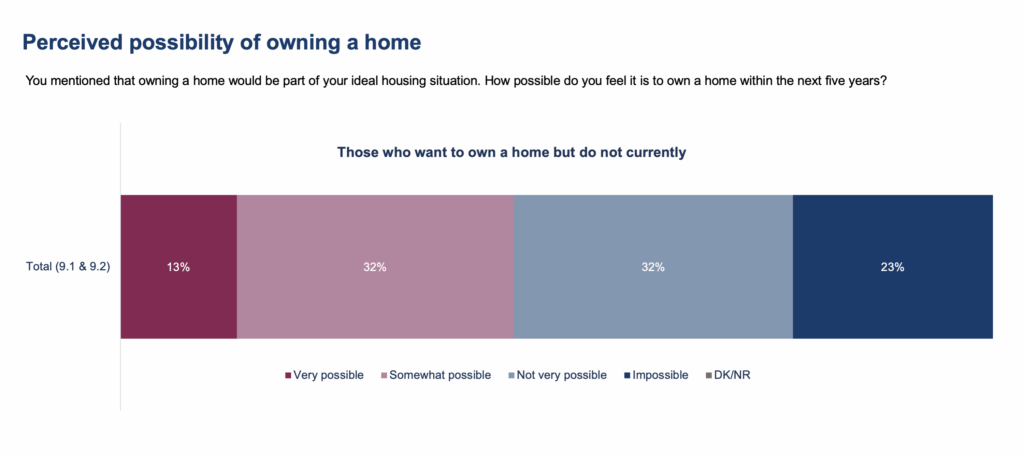
Among those who have tried to access mortgages, nearly half (47%) report struggling to save enough for a down payment, while 34 per cent cite poor or limited credit history, 32 per cent say they simply don’t qualify, and 24 per cent report difficulty finding a lender they trust. These challenges are especially pronounced among non-homeowners and on-reserve respondents, who are also the most likely to report negative experiences that may reflect discrimination in the housing process.
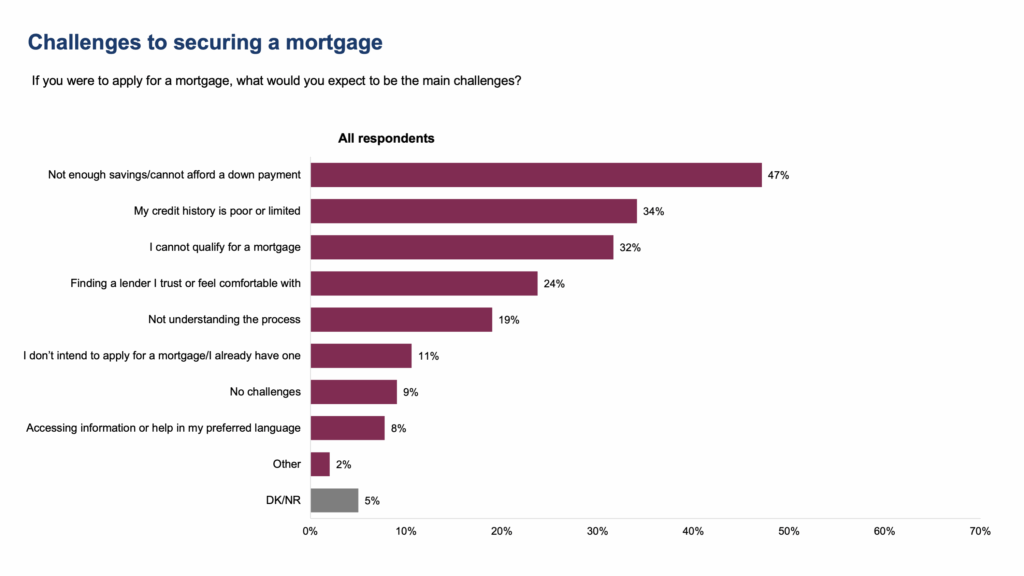
Pathways to progress
Even amid these obstacles, the data suggest that the desire for stability and security through homeownership is both real and rising. As Indigenous communities continue to forge successful partnerships in economic development, set against the backdrop of larger narratives of Indigenous resurgence, families may begin to see these aspirations as attainable.
In this context, the growing sense of optimism takes on added meaning. It reflects not just an improvement in material conditions, but a deeper shift in confidence: a belief that the systems shaping Indigenous lives can evolve, and that progress, while uneven, is possible.
Looking ahead
Indigenous peoples across Canada are navigating the same affordability crisis confronting the country at large, but with the added weight of structural inequities and historical exclusion.
Despite this, what stands out is not resignation, but resilience. The aspiration to own a home is widespread. If governments and partners can continue to support community-driven housing initiatives and equitable access to financing, the promise of homeownership may become less a distant goal, and more a shared reality.
Findings are drawn from the May 2025 wave of Earnscliffe’s Indigenous Insights study, a syndicated, quarterly research study run by Earnscliffe that captures the views of First Nations, Métis, and Inuit peoples across Canada. With 500 interviews every quarter, it is designed to be representative of the Indigenous population in Canada as we understand it from Statistics Canada. To learn more about the study, please click here.
